
We had planned to make the long run to fish San Clemente Island, about 60 miles off the coast of Southern California. The forecast had looked promising, but a cold northwest wind greeted us on game day.
“There’s no way we’re making it to Clemente today,” my fishing buddy, Jimmy Decker, said. After a brief discussion, we decided to fish the waters of Los Angeles/Long Beach Harbor. We swapped out the heavy gear with lighter tackle and headed for the bay.
We launched the boat, and as we idled away from the ramp, I asked Decker where he wanted to start. “How about here?” he replied, while pointing out a short stretch of riprap no more than 200 feet from the ramp itself.
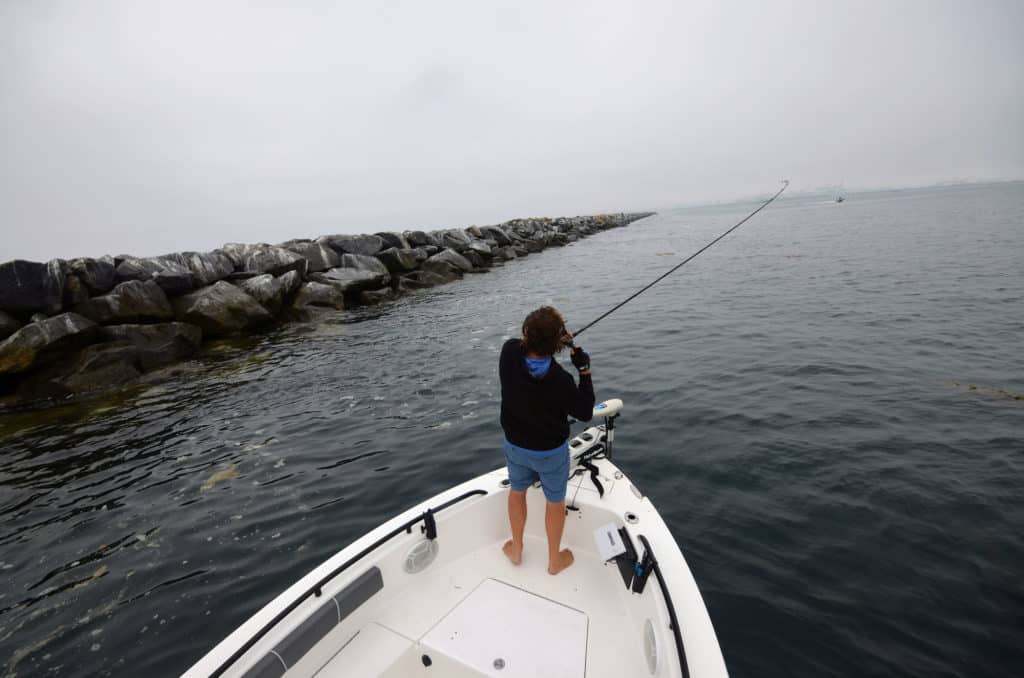
Decker walked to the bow, deployed the trolling motor and grabbed a light spinning rod rigged with a Ned Rig, a light lead-head that’s shaped like a pencil eraser and rigged with a stubby plastic worm that, in my opinion, looks like nothing any self-respecting fish would be interested in biting. The bait’s nickname is “the turd,” and I find it very fitting.
Making a cast perpendicular to the rocks, Decker let the bait settle before slowly lifting his rod tip to hop it down the rubble. On the second hop, I watched his 12-pound fluorocarbon line jump as the lure fell, and Decker reflexively set the hook on what turned out to be a 14-inch spotted sand bass, a fish that displays amazing fighting spirit and strength for its size.
With the first seeds of a pattern sown, we released the fish and headed off to find the next productive stretch of riprap.
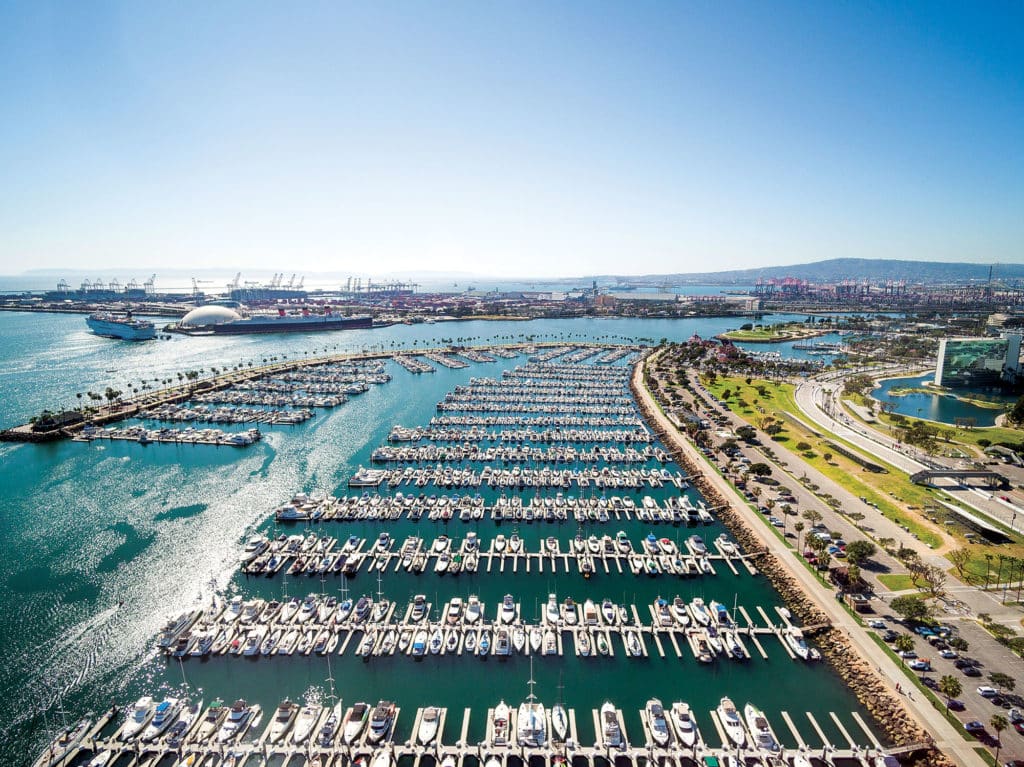
Bays of Plenty
The sprawling harbor of LA/Long Beach represents just one of many Southern California bays where anglers can find light-tackle action and protection from Pacific waves. Other popular bays for inshore angling include San Diego Bay, Mission Bay, Newport Harbor, Huntington Harbour and King Harbor.
A wide of range of fish inhabit these sheltered waters, including California halibut, corbina, sargo, shortfin corvina, spotfin croaker, rubberlip perch, white seabass, yellowfin croaker and even a Pacific species of bonefish. Yet, the three varieties of saltwater bass — kelp bass (aka calicos), barred sand bass (sandies) and spotted sand bass (spotties) — garner much of the attention from anglers. Calicos and sandies can reach weights in excess of 7 pounds, while a 3-pound spotty is something to brag about. The parallels between these fish and freshwater bass are hard to ignore. All love structure, and the tackle and techniques are strikingly similar. What’s more, a strong catch-and-release ethic prevails among SoCal’s saltwater-bass fraternity.
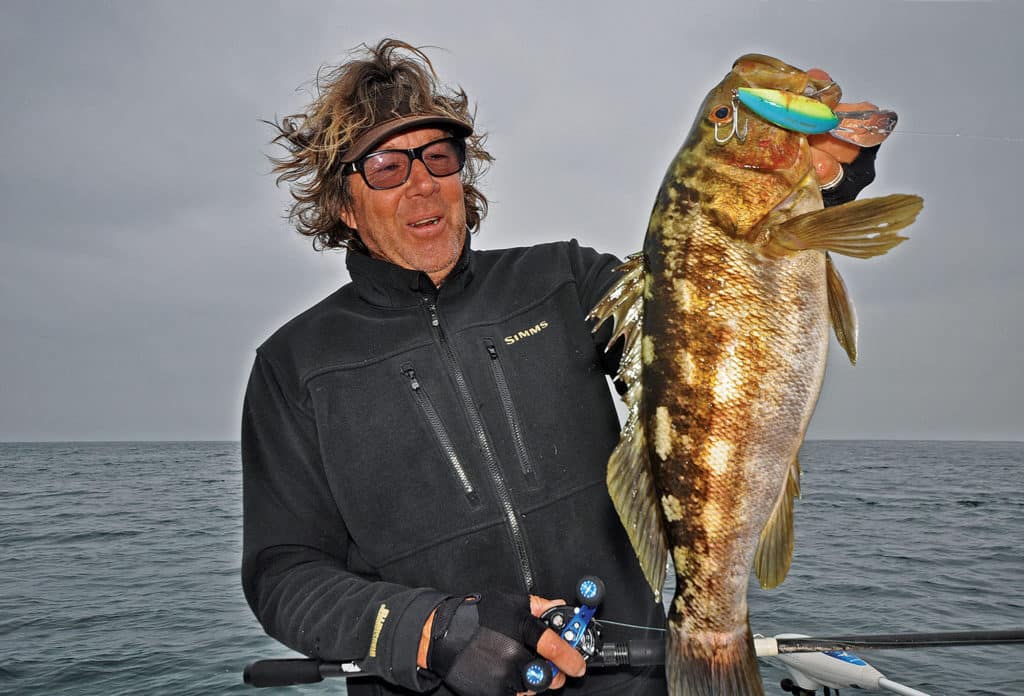
One element that’s important to bass fishing in any Southern California bay is an abundance of structure, and there’s definitely no shortage of that in LA/Long Beach Harbor. If you include the inside of the 8.3-mile-long Federal Breakwater, built in the 1940s to protect the outer harbor, there’s at least 20 miles of riprap here. While none of Southern California’s other harbors or bays are home to as much, all of them have some sections of riprap, and the good news for anglers is that it all basically fishes the same regardless of where it’s located.
I’ve found that the key to consistently catching fish along riprap is having the ability to quickly rule out dead water. While just about any stretch of riprap holds a few biting fish, such as the bass that Decker caught that morning, the “dead” areas are time vampires that suck you into burning through your fishing day, wasting time and effort in unproductive waters.
To avoid this, I won’t even make a cast until I see at least two of three factors: surge, baitfish and current. Unlike fish that relate to isolated pieces of structure, riprap bass tend to roam the length of the structure. You’ll need to relocate the fish every time you’re on the water.
Surge Factor
The first necessity is surge. This can come in the form of swells pushing water through the rocks on the inside of a breakwall or jetty, wind waves breaking on a point along the inner harbor walls, or tidal movement creating turbulence along a pinch point in the harbor.
Surging water often aggregates baitfish that feed on the nutrients it carries. This brings us to the second factor, the presence of baitfish. When you find a section of riprap with some surge, check your fish finder — or if the water is clear, just look over the side — to see if there are any baitfish around. If so, watch how the bait are acting. If they’re milling around in a relaxed manner, just keep driving because the bass won’t be biting. If you find bait that look harassed and are swimming around erratically in small groups, give the area a few casts.
The final ingredient, and the least obvious of the three, is current. Except during the high and low slack tides, current runs as bays either fill or empty with the tide. Since fish need to be pointed into the current to remain stationary, they will always be looking up-current when hiding along the rocks looking for food. As a result, if you’re presenting a lure such as a crankbait or swimbait parallel to the riprap, you’re going to want to retrieve it in the direction the current is running.
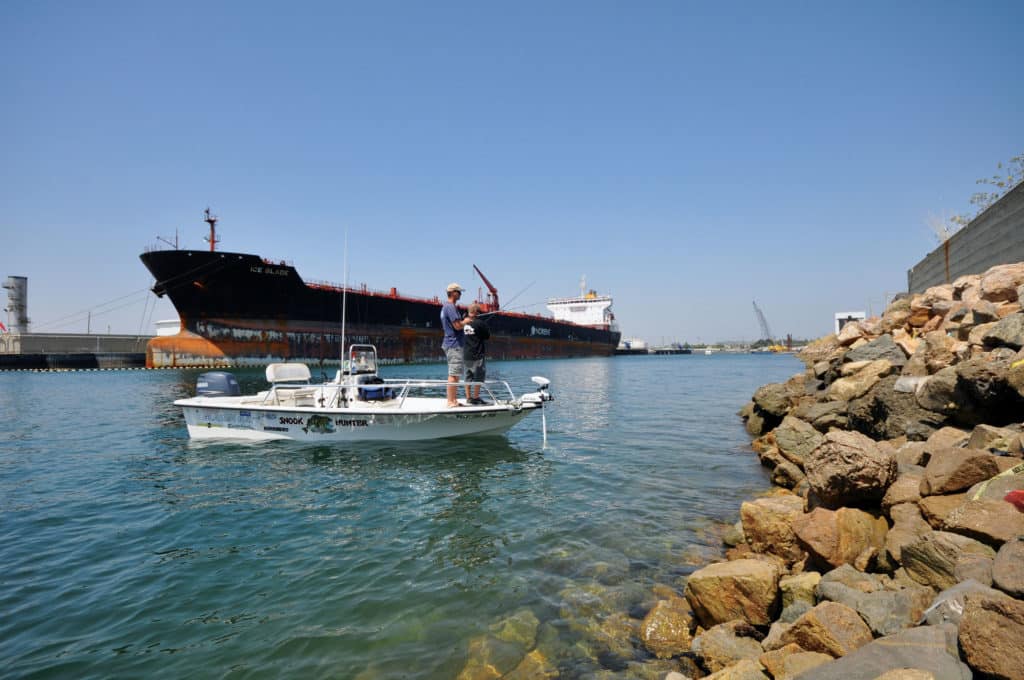
Stay in the Zone
We hit several good stretches of riprap during our trip that morning, and like all such bites, they had a defined beginning and end. Continuing to fish for too long once you get out of the strike zone is another huge waste of fishing time. Biting stretches will usually have their own pattern — sometimes it’s a bite every cast, other times it’s a bite every 10 or 20 casts. Whatever the pattern is, once it changes for the worst, it’s time to go back through and make another pass or go look for something else. Sure, you might stumble onto another biting stretch if you continue fishing along the rocks, but if that next stretch is a couple of miles away, you’re probably going to run out of fishing time before you find it.
Once you’ve found a promising stretch of riprap, there are several presentations well-suited to catching bass along it. These presentations fall into two basic categories: parallel and horizontal. When approaching a new zone, start with parallel presentations because these allow you to cover more water to find biting fish. To properly fish parallel to the riprap, position your boat within a few feet of the rocks. Having a bow-mounted trolling motor definitely helps in this situation, but it’s not essential.
If you’re new to fishing riprap and concerned about getting too close to the rocks, start on a stretch where there is no wind or the wind is blowing parallel to the rocks instead of toward or away from it. Take it slow and get as close as you’re comfortable fishing. Once you get a feel for how the boat is going to drift or move along the wall, you can get a little closer.
Whenever fishing near rocks, keep an eye on what’s happening all around your boat. A swell or large boat wake can push you into the danger zone quickly if you aren’t paying attention. Also, always keep your main motor running when using the trolling motor so you can get the boat to safety quickly if the trolling motor becomes disabled.
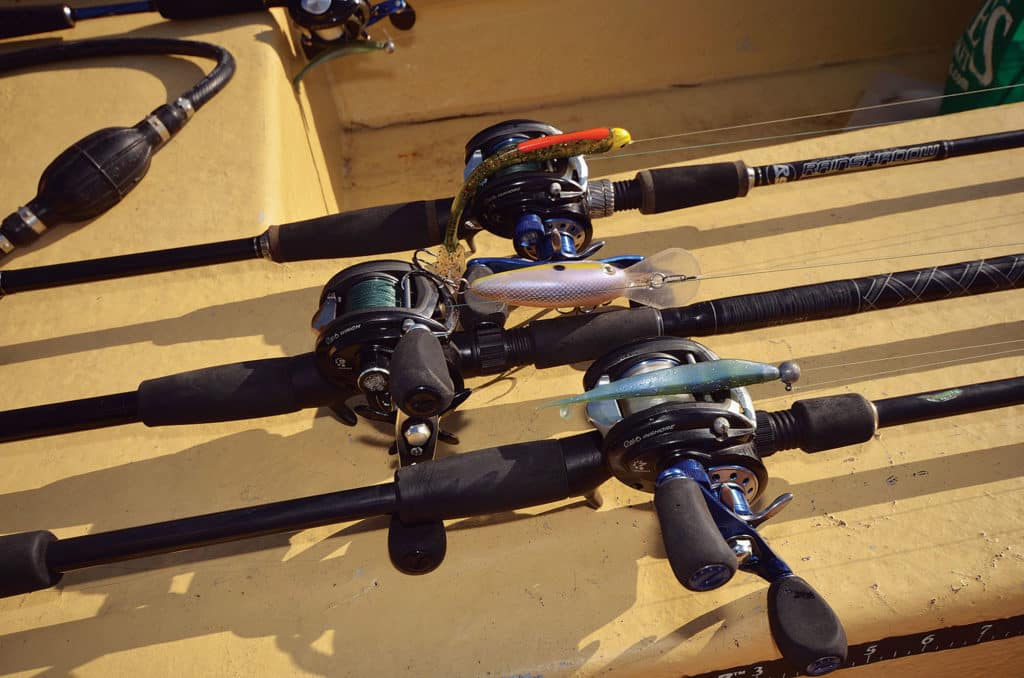
Best Baits
My favorite lure for fishing riprap is a deep-running crankbait. Making bottom contact with the bait is often the key to getting bass to bite, so I like to fish a bait that is rated to swim a few feet deeper than the depth I’m fishing. For an all-around bait, it’s hard to beat the Strike King Series 6XD, but change the hooks to heavier-duty trebles because the stock hooks don’t hold up in salt water. The presentation starts with making a long cast parallel to the wall, followed by quickly winding the reel until the bait hits the bottom. This is followed by a stop-and-go retrieve that’s fast enough to keep the bait bumping periodically against the rocks.
Read Next: Fishing Success in Windy Weather
Once you find an area of biting fish, or if you wear yourself out throwing the crankbait too much, you can pull away from the wall a bit and switch to a perpendicular presentation using a swimbait, fluke or even the Ned Rig. When fishing in this manner, cast right up to the waterline and lift your rod tip to hop the bait down the rocks. Depending on depth, you might also let the bait sink in free-spool as the bottom falls away. Once you find the depth of the water column where the fish are biting, tighten up your presentation to avoid wasting time in empty water.
What’s Up Dock?
Boat docks can also prove productive, and finding biting fish around these isn’t nearly as involved as finding them along riprap. That’s because the fish are almost always located right where they’re supposed to be. Being ambush predators, all three species of bass like to relate to structure when feeding because it gives them a place to hide. When it comes to boat docks, the best hiding place is behind the pilings that are driven into the seafloor.
I’ve found the easiest and most consistent lure for dock fishing is a Zoom Fluke or Super Fluke fished on a 3⁄16- to ½-ounce ball-shaped lead-head. This bait mimics about 90 percent of the small fish swimming around the harbor and seems to always get bit. Presenting the bait is as simple as pitching it up against a piling and letting it sink on a completely slack line. The key is letting it sink straight down to the hiding fish, but if your line isn’t slack, it’s not going to do that. When the sun is high, fish will also hide in the shade of docked boats and can be targeted with a fluke cast into the shade, allowed to sink to the bottom, and then retrieved slowly.
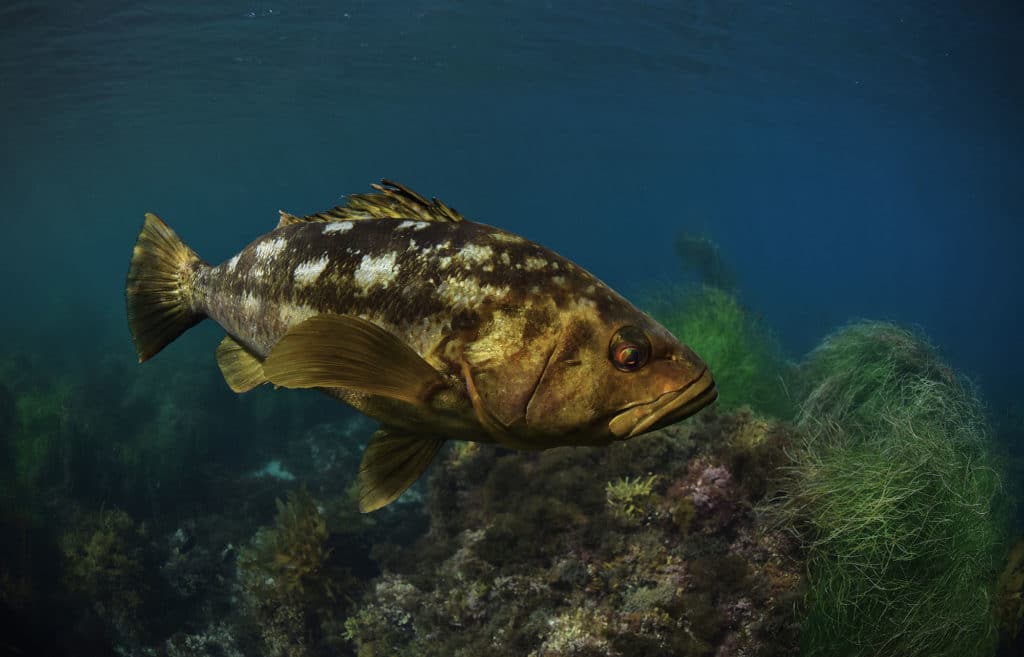
Shady Business
Fishing in the shade of objects brings us to our third type of bay structure: mooring fields. Newport Harbor, in particular, has a great number of mooring fields. Moored boats are secured with lines attached to anchors at the bow and stern. These anchors will sometimes offer a hiding spot for a bass, but in many cases, the anchors themselves are silted over and don’t provide cover. In these cases, bass usually are found hiding in the shade of moored boats and can be caught on a number of presentations, including swimbaits and crankbaits.
Fishing moorings is a numbers game because not all moorings hold fish, so cover as much water as possible. One secret is to always look for birds known as western grebes, either sitting on the water or diving under the surface. These birds often feed on baitfish pushed toward the surface by bass.
Beds of eelgrass offer another fishing opportunity. The beds of long, stringy grass attract baitfish that use the vegetation as cover, which also provides good camouflage for ambush predators such as bass and halibut. Eelgrass beds can be easier to find in some bays than others. For example, while most of the bottom in Mission Bay is covered in grass, the beds are far fewer in nearby San Diego Bay. A side-imaging sonar lets you scan the bottom for eelgrass beds. Fish the up-current edge of the beds, where feeding fish are most likely lie in ambush.
When winds howl and Pacific waters rage, you can still go fishing and have a ton of fun with light tackle by targeting saltwater bass and other species inside the bays and harbors of Southern California.
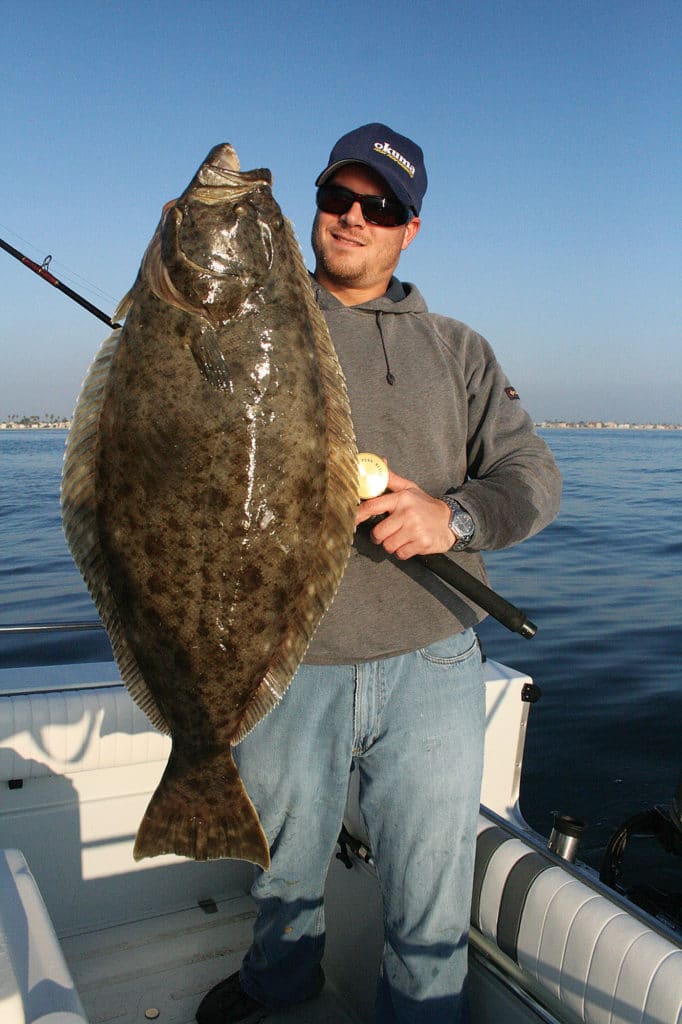
Harbor Halibut
There are plenty of big California halibut to be caught in West Coast harbors and bays, and these flatfish are attracted to many of the same conditions that attract barred sand bass, kelp bass and spotted sand bass. If you’re fishing a stretch of riprap with a swimbait, it never hurts to turn around and make the occasional cast out to sea. Let the bait sink all the way to the bottom, and do a slow retrieve that allows you to keep bottom contact until
the bait is straight up and down. California halibut, which can reach weights in excess of 40 pounds, often hunt the rock-sand interface along stretches of riprap.
Check the Tides
The tide changes every six hours in the bay, and conditions turn 180 degrees when it does. By consulting a tide chart before your trip and keeping tabs on what the tide is doing when you catch fish in a particular location, you can make an educated guess as to which areas might produce a bite during certain stages of the tide on future trips, further cutting down on wasting time in dead water. And remember that bass will always have their noses pointed into the current, so adjust your presentations accordingly when the tide turns.
About the Author: Erik Landesfeind is a freelance writer with more than 35 years of experience fishing Southern California’s inshore and offshore waters for a variety of species.








